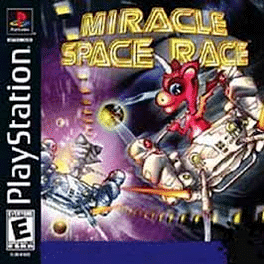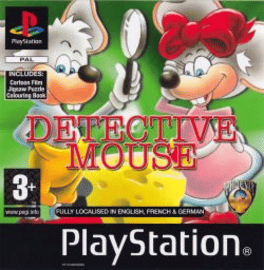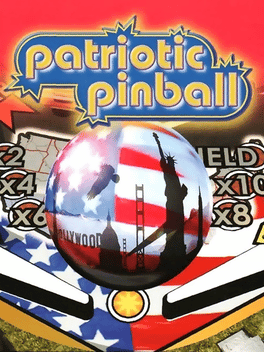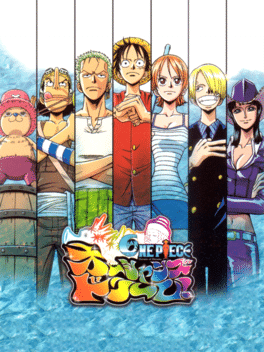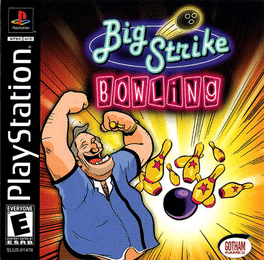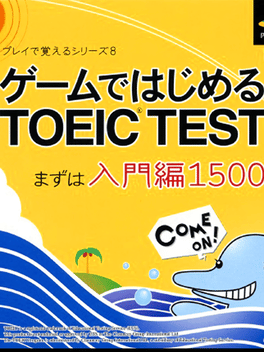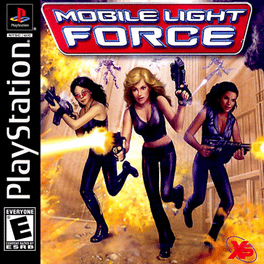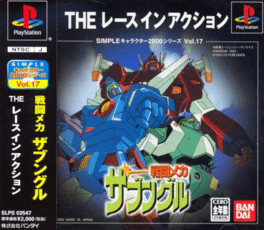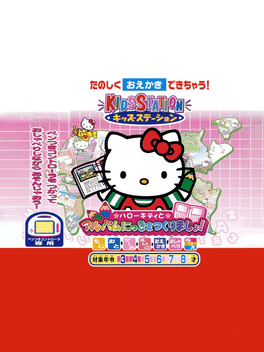New Playstation Games - Page 6
-
Miracle Space Race
2003
Miracle Space Race
2003
Miracle Space Race, Race 10 different characters with 6 different weapon types through space tracks with rocket propelled space karts! -
Detective Mouse
2003
-
All Star Racing 2
2003
All Star Racing 2
2003
Mud Duck Productions' follow up title to 2002's All Star Racing changes focus from classic, stock and super cars to Truck, Kart, Grand Prix (open wheel) and Motorbike racing. Each type of vehicle in All Star Racing 2 features changeable color schemes and five tracks, and players can select from multiple viewpoints and three levels of difficulty. Five race lengths are offered (user's choice), beginning with three-lap sprints and increasing by increments of three, culminating in 15-lap endurance contests. All Star Racing 2 is Mud Duck Productions' follow up title to the 2002 title, All Star Racing. While the first game focuses on stock, classic and super cars, this title features open wheel, truck, sport bike, and kart racing. -
Patriotic Pinball
2003
Patriotic Pinball
2003
It's time to explore and discover all the possibilities that can unfold in our proud nation. Patriotic Pinball takes all the things that make the U.S. great and puts them on the table. Take an American tour on two tables filled with more thrills than a baseball game and more flashing lights than a 4th of July fireworks display. Learn the true meaning of becoming an American pinball wizard in Patriotic Pinball. -
2 Games I MediEvil & C-12: Final Resistance
2003
This twin pack includes: - MediEvil - C-12: Final Resistance -
One Piece: Ocean's Dream!
2003
One Piece: Ocean's Dream is a Japanese single player/multplayer board game for the PlayStation console based on the One Piece manga and anime series. It was developed by 8ing and Q Entertainment and published by Bandai Namco. It had also been made into a filler arc of the Anime series entitled Ocean's Dream Arc, which followed the storyline of the game. The game was released in May 2003. -
Hellboy: Asylum Seeker
2003
Hellboy: Asylum Seeker is a third-person adventure game in which you play as Hellboy- Mike Mignola's comic-book hero and paranormal investigator. The game takes place in 1960's Prague, during Hellboy's early work with the BPRD (British Paranormal Research Division). Hellboy and Sara are investigating their missing agent Peter, who lost contact with his team somewhere in Czechoslovakia. It's up to Hellboy to uncover the events surrounding that disappearance, and set things right. -
Football Madness
2003
Football Madness
2003
Feel the passion and tension of the big match atmosphere. Crunching tackles and aggressive barges are all fair play in this game. Playing without the interruption of an irritating ref, you can do what you always wanted to without being sent off. You can even resort to dirty tactics!! -
Marl Jong!!
2003
Marl Jong!!
2003
Marl Jong!! Is a puzzle game that was released on April 24th, 2003. It came with a drama CD and a vocal CD. It takes place mainly in Eringya Valley, but there is also a scenario that seems to take place in the Princess Contest mentioned in Little Princess. -
Big Strike Bowling
2003
Big Strike Bowling
2003
Big Strike Bowling is a Sports game, developed by Coresoft and published by Gotham Games, which was released in 2003. -
Game de Hajimeru TOEIC Test: Mazu ha Nyuumon-hen 1500
2003
Learn English while playing! Made to teach English language to Japanese speakers. -
Mobile Light Force
2003
Mobile Light Force
2003
Mobile Light Force is a sloppy localization of the first Gunbird for PlayStation originally released in 1994. This localization removed all plot-related elements including cutscenes and endings, took the in-game's fan art gallery and renamed some characters with names taken from XS Games employees. The game's cover art and title screen also feature a completely unrelated artwork featuring characters resembling the main trio from Charlie's Angels. This realistic artwork is the complete opposite of the anime-styled aesthetics of Gunbird, and the characters displayed don't appear anywhere in the actual game. -
Simple Characters 2000 Series Vol. 16: Ganba no Bouken Puzzle
2003
Simple Characters 2000 Series vol.16: Ganba no Bouken Puzzle is an action puzzle game featuring characters from the anime series Ganba no Boken. The gameplay is about put the counter that is in botton right part of the screen to zero, in some stages that means destroy mouses, cats, birds or find all the items. -
Simple Character 2000 Series Vol.17: Sentou Mecha Xabungle - The Race in Action
2003
A 2D racing and mecha combat game based on the Combat Mecha Xabungle anime series. -
Easter Bunny's Big Day
2003
Easter Bunny's Big Day asks children to help the Easter Bunny find and deliver eggs to all the boys and girls of Easter Village. Unfortunately, the floppy-eared rabbit doesn't have enough eggs, so players will have to solve puzzles and play games to find more eggs. Multiple difficulty levels keep the action interesting for children aged four to ten, and several game modes offer additional play options. Parents can play along with children and add assistance with the "helper" feature. -
Samsaric Asymptotes
2003
-
Dinosaurs
2003
-
Dalmatians 2
2003
-
Kids Station: Hello Kitty to Album Nikki wo Tsukurimasho!
2003
In Hello Kitty to Album Nikki wo Tsukurimasho! The player will travel with Hello Kitty to different countries around the world and play different mini-games. -
Wagamama Fairy: Mirumo de Pon! Mirumo no Mahou Gakkou Monogatari
2003
Wagamama Fairy: Mirumo de Pon! Mirumo no Mahou Gakkou Monogatari is an adventure video game which was was developed by Jupiter Corporation and published by Konami and released for PlayStation on March 20, 2003 in Japan. This game is based of the Manga and Anime series Selfish Fairy Mirumo De Pon!.
